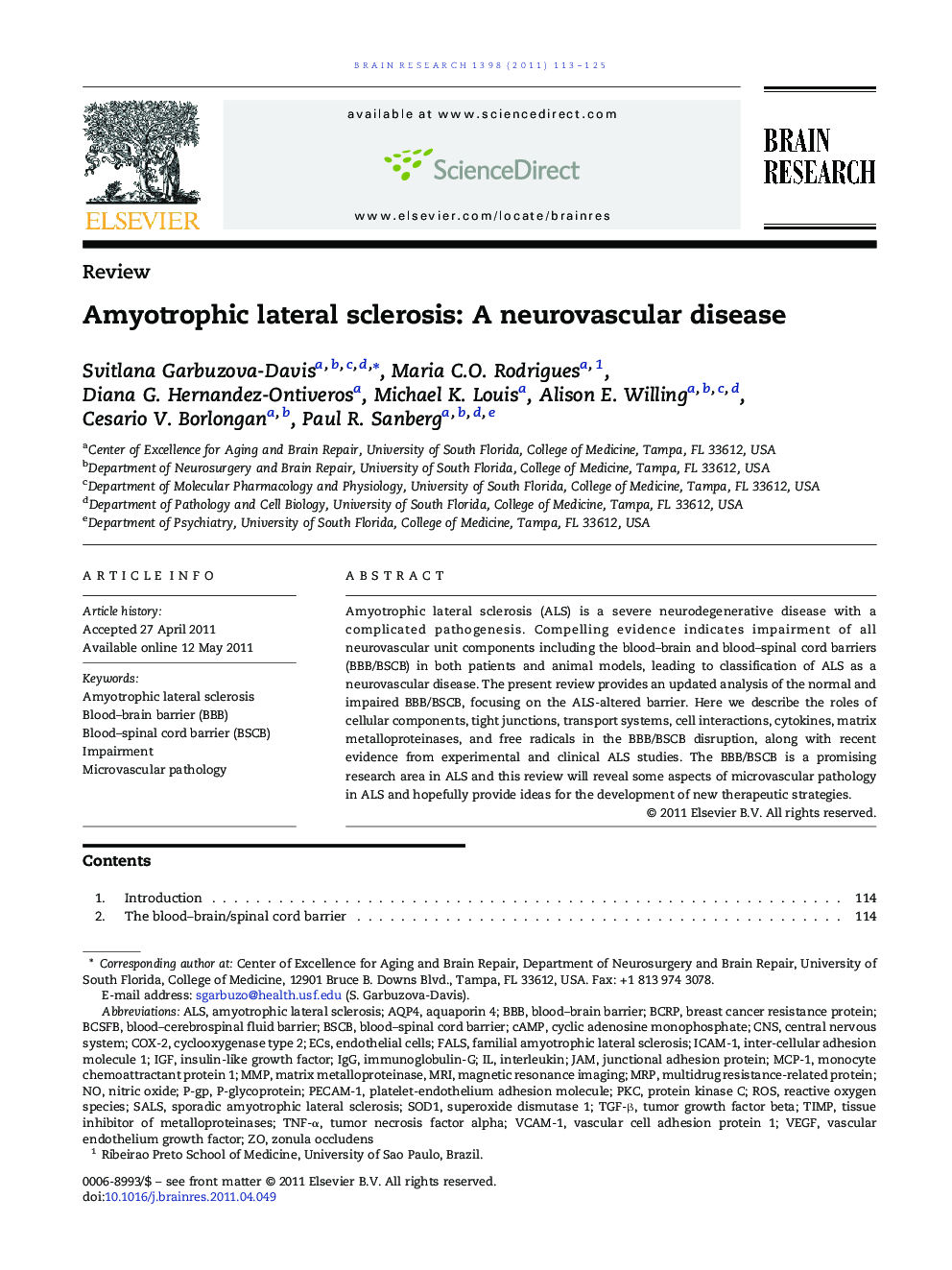| Article ID | Journal | Published Year | Pages | File Type |
|---|---|---|---|---|
| 4325863 | Brain Research | 2011 | 13 Pages |
Amyotrophic lateral sclerosis (ALS) is a severe neurodegenerative disease with a complicated pathogenesis. Compelling evidence indicates impairment of all neurovascular unit components including the blood–brain and blood–spinal cord barriers (BBB/BSCB) in both patients and animal models, leading to classification of ALS as a neurovascular disease. The present review provides an updated analysis of the normal and impaired BBB/BSCB, focusing on the ALS-altered barrier. Here we describe the roles of cellular components, tight junctions, transport systems, cell interactions, cytokines, matrix metalloproteinases, and free radicals in the BBB/BSCB disruption, along with recent evidence from experimental and clinical ALS studies. The BBB/BSCB is a promising research area in ALS and this review will reveal some aspects of microvascular pathology in ALS and hopefully provide ideas for the development of new therapeutic strategies.
Research Highlights► Studies on animal models of ALS evidence BBB/BSCB alteration and vascular leakage. ► BSCB damage precedes motor neuron death and inflammation in animal models of ALS. ► Disruption of the BSCB is also observed in post-mortem tissue from ALS patients. ► Microvascular impairment in ALS is a central contributor to disease pathogenesis. ► ALS should be considered a neurovascular disease.
